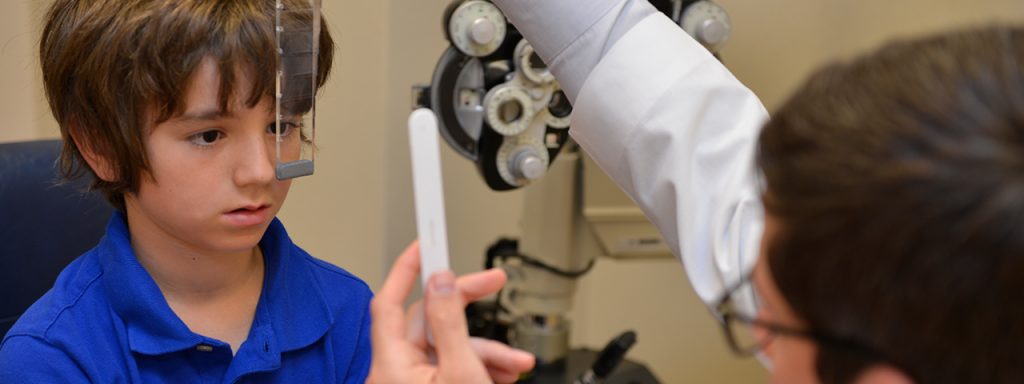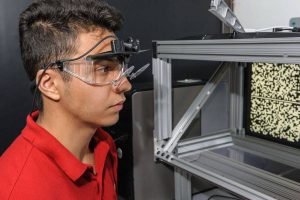Convergence Insufficiency (CI) affects up to 1 in every 8 children, over 13% of all school-aged students.
Many children suffer with various eye problems, which can impact their reading, learning and attention levels.
Q1: What is Convergence Insufficiency?
Convergence insufficiency (CI) is a common vision problem, caused by the inability of the two eyes to work together as a team.
For children with CI, when reading or doing homework or just focusing on a word, one eye will fatigue as it tries to turn outward.
Q2: What’s the difference between CI and exotropia?
People with CI experience eye fatigue and eye strain only when focusing on a close image.
In patients with exotropia, the eyes have a strong tendency to turn outward at both near and far distances.
Q3: What symptoms are experienced with convergence insufficiency?
Convergence insufficiency symptoms vary, and not all symptoms are present in every patient.
Signs and symptoms of CI include:
- Eye fatigue
- Headache
- Blurred vision
- Double vision
- Attention difficulties
- Sleepiness when reading
- Needing to re-read things
- Motion sickness or vertigo
- Often losing your place when reading
- Trouble concentrating on what you are reading
- Words seem to jump or float on the page
SEE RELATED: Do I Have Convergence Insufficiency?
If you’ve experienced any of the above symptoms, contact an eye doctor near you.
Q4: How is convergence insufficiency diagnosed?
An eye doctor diagnoses convergence insufficiency after taking a history of the patient’s symptoms and assessing convergence ability.
The examination for CI includes:
Near Point of Convergence (NPC), this is the distance a person can hold the eyes together without experiencing double vision or discomfort
Fusional Vergence Amplitude (FVA) and the amount of prism that can be placed in front of the eyes at a given distance before experiencing double vision
Prisms will also be used by the examiner to determine the degree of outward deviation of the eyes at both a distance and close range.
Other tests may include any refractive problems, ocular muscle dysfunction, saccades, pursuits, and accommodation (near focusing) issues.
Q5: How is convergence insufficiency treated?
Convergence insufficiency can be successfully treated through vision therapy.
If convergence insufficiency is causing you to have eye focusing problems, doing specific eye exercises can increase the eyes’ convergence ability.
Vision therapy is a customized program, often using computer with software designed to increase convergence. Eye surgery and lenses with built-in prisms have not proven to be very useful.
Treatment can take place in an office with a trained eye doctor and therapist combined with at-home activities.
Q6: Can convergence insufficiency be treated with glasses or patching?
Since CI is a brain-eye communication issue, most often, glasses alone are not sufficient.
Some eye doctors will prescribe base-in prism lenses to artificially align the eyes for reading, but these lenses are unlikely to help the patient develop stronger convergence on their own.
Patching is not a viable approach for improving convergence since it interferes with the capacity to perform binocular functions, using the two eyes together.
Optometrists may sometimes ask the patient to patch one eye momentarily to reduce double vision when doing a lot of close work.
Q7: Is convergence insufficiency associated with other vision problems?
Convergence insufficiency patients typically have a normal range of refractive errors as well as acceptable visual function.
When being examined for convergence, a patient’s accommodation, the ability to focus each eye separately at close distance, will also be tested.
LEARN MORE: Vision Therapy for Children
Schedule an appointment with an eye doctor near you to find out more about convergence insufficiency.
Convergence Insufficiency (CI) affects up to 1 in every 8 of all school students.
Many children with CI struggle with reading, learning and attention.









